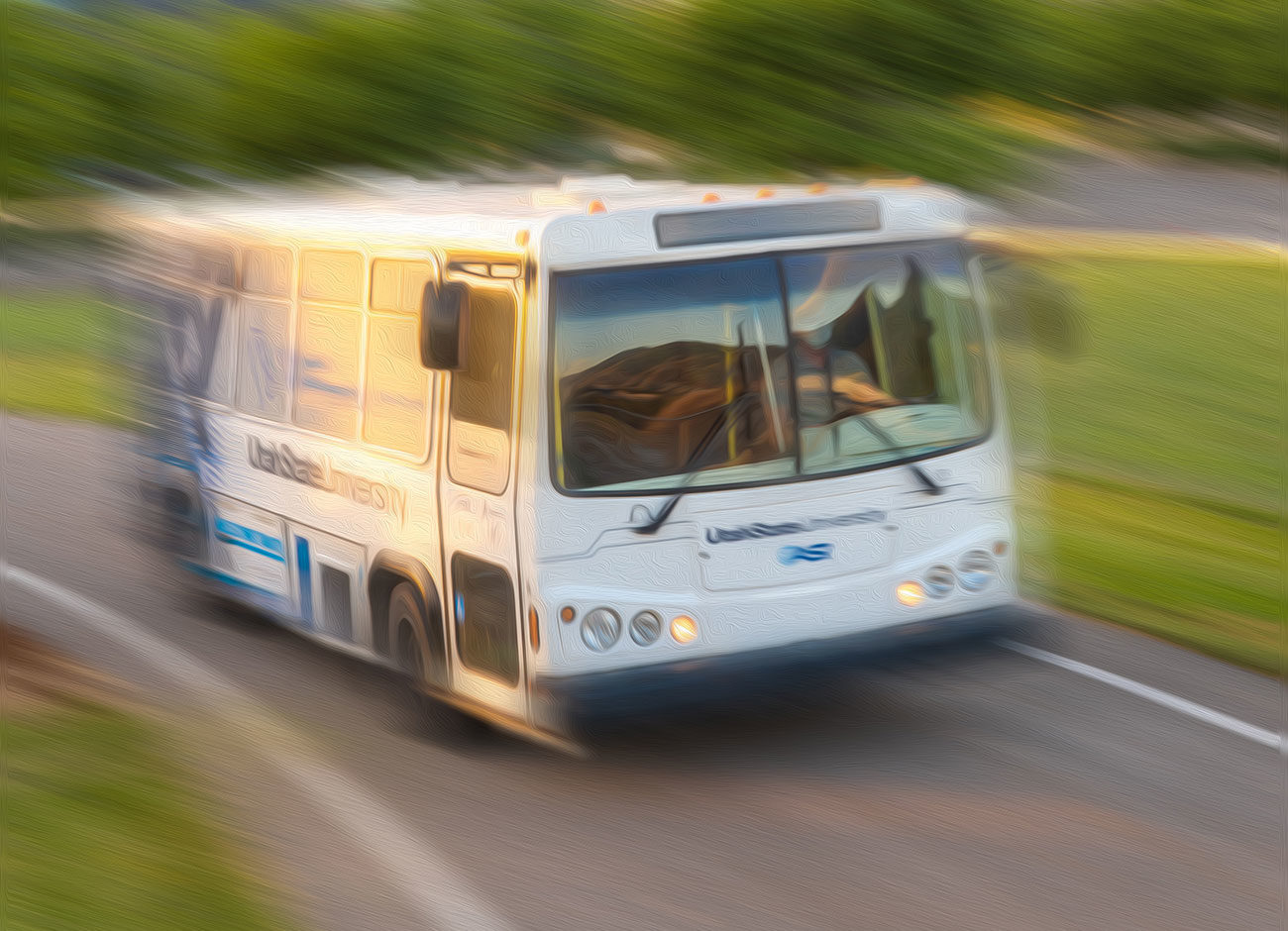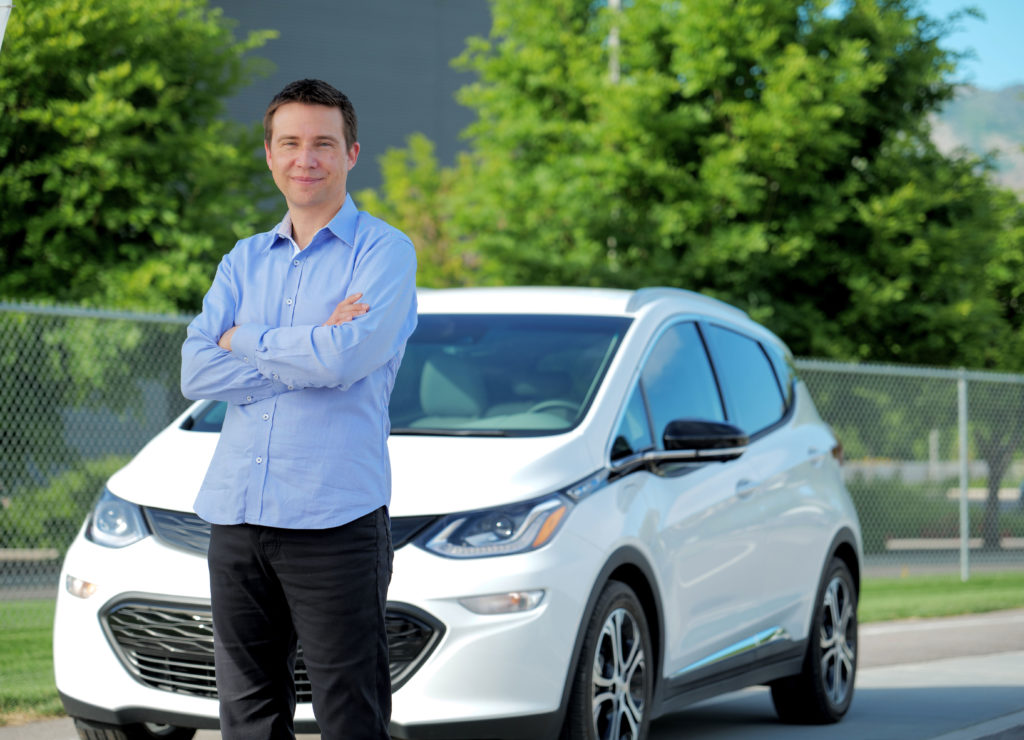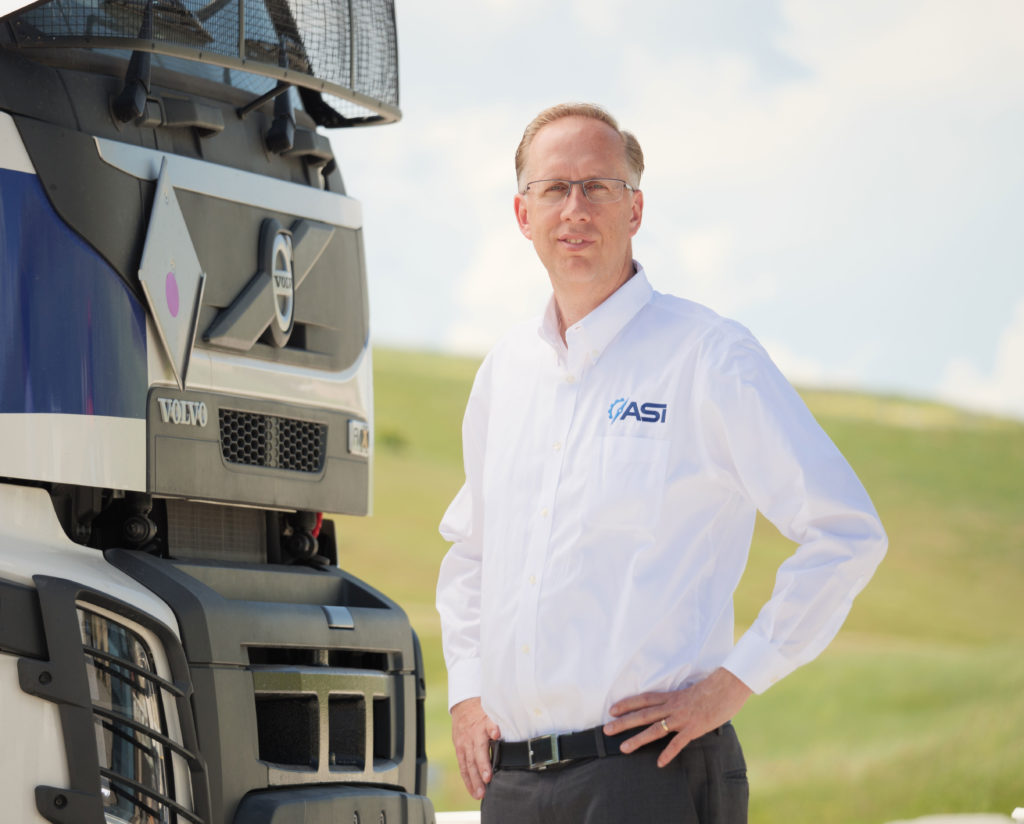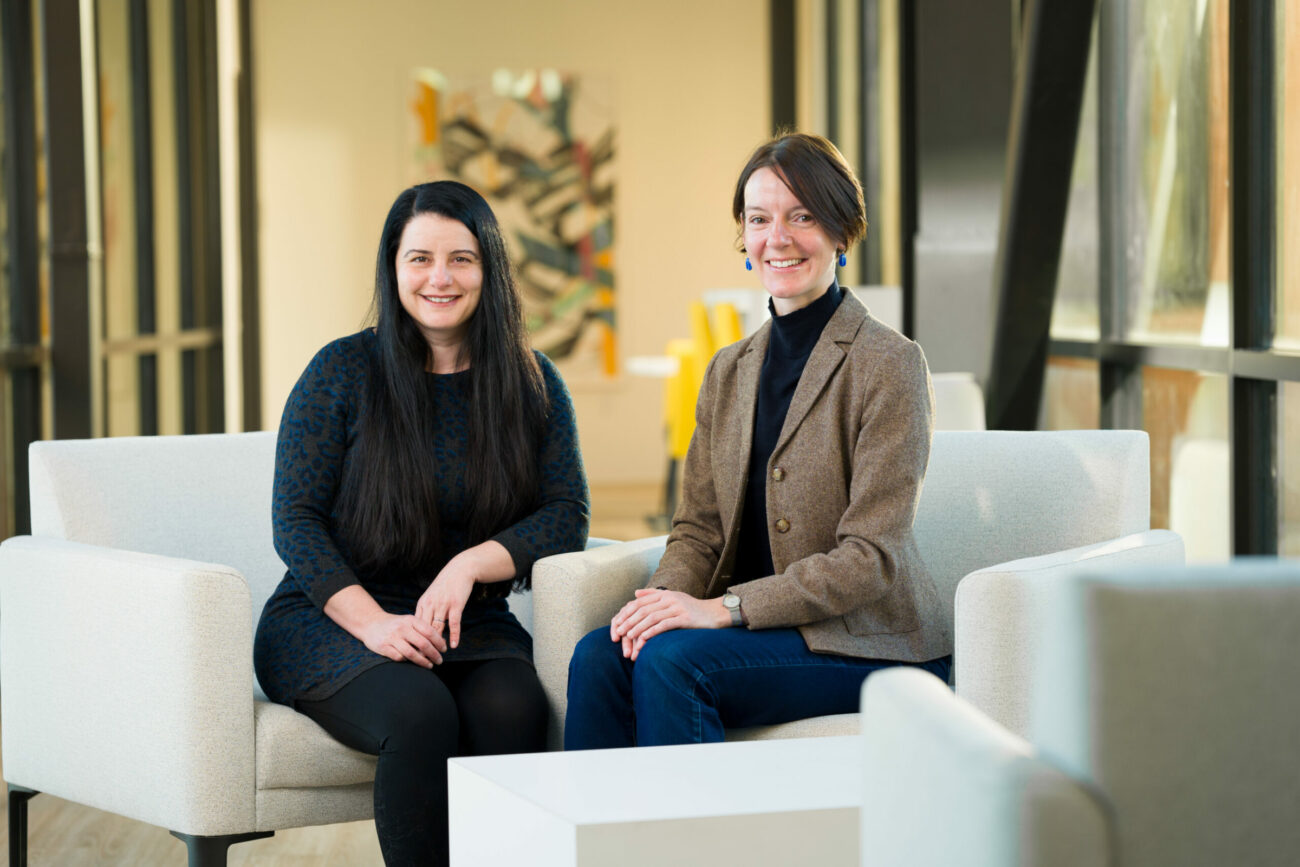Away We Go!

Regan Zane, blessed with a name that sounds straight out of a sci-fi novel, is preparing for a world in which vehicles never have to stop for fuel and will never emit a kilogram of pollution.
Nathan Dana, equally blessed with a fourth-grader’s unbounded imagination, is already there. “I think we will have tiny solar panels on our electric vehicles with insanely powerful magnifying abilities that will capture the energy of the sun easily and make it so all [of ] our vehicles have zero carbon emissions,” he wrote for Utah State University’s Edith Bowen Laboratory School teacher, Shannon Rhodes. She challenged her class to write what they think life will be like 100 years hence. Dana continues, “I also think these vehicles will sense tracks under the roads so they will be able to move themselves around and we won’t need drivers.”
Zane was duly impressed. “Let’s give him an award and get him involved at an early age,” he says. This from the David G. and Diann L. Sant endowed professor from the College of Engineering who has just over 200 academic papers in the field published and has filed 39 patents in electrified technology. Th is also from the director of ASPIRE, the newly formed research center funded by the National Science Foundation for electrified transportation. The new center, announced in August, comes with a 10-year NSF commitment of more than $50 million, which adds up to $80 million in total research funding that Zane has helped generate so far since joining the university in 2012. This, too, from the inaugural director of the Sustainable Electrified Transportation Center (SELECT) who has spent the past five years testing vehicles that “sense (electric) tracks under the road,” enabling them to run without ever having to refuel.
Good thinking, Master Dana. And good validation for you, Dr. Zane, because this imaginer and his fourth-grade classmates are the very people with the best shot of being around to actually see your innovations—and their dreams—come to pass.
Eye to the Future
And know, too, Edith Bowen fourth-graders, that there are others, many more, on and off the same campus you attend, with an eye to the future of transportation. Smart people such as College of Engineering transportation planning researcher Patrick Singleton, and former electrical engineering graduate students such as Mel Torrie ’97, MS ’98, who has helped to set industry standards for the past 20 years in the use of driverless vehicles in mining, construction, and agriculture.
Zane talks about the future of transportation with the same familiarity that architects do their blueprints. We meet up over Zoom, just weeks into the pandemic. His voice, despite the dire days, is sunny as he talks about opportunities that lie ahead and big announcements just around the corner.
“What excites me about the future is not just the technology aspects,” Zane says. “The part that really comes home to me is the opportunity to impact lives.”
His focus on transportation is one way he knows he can make a difference. It is why he now spends most of his energy trying to figure out how to get people and goods from Point A to Point B more efficiently with the least impact on budgets and the environment.
“If you think about a transition from petroleum to electric, however that electricity is being generated, we’re looking at roughly doubling the load on the electric grid over decades. That helps solidify in our minds that we’ve got a major societal challenge in front of us.” – Regan Zane
Singleton spends a similar amount of time thinking about travel behavior and travel demand modeling. The assistant professor in transportation grew up enamored by historic roads and bridges and was fascinated by how these roads developed, how they were replaced, and the impact you can still see in communities today, he says. “I am conscious that we need to be careful to learn the lessons of the past.”
Singleton points to how the rise of automobiles in the 20th century transitioned streets from being a place for people to walk and assemble to one nearly exclusively for motor vehicles. Laws against jaywalking arose limiting where pedestrians could travel. He sees “parallels to what might happen in the future with autonomous vehicles (AVs).”
Historically, transportation engineering assumed people commute to get somewhere. Singleton is among the first in his field to examine another aspect of travel—enjoyment. His studies show that cyclists and walkers are the groups most likely to positively rate their commutes. Perhaps travel of the future may not look so different from today.
“I come from the perspective that we are pretty stable in what we want and how we make our choices,” he says. “The only thing that is really going to dramatically change how we travel is maybe certain technologies and the way that they work.”
Singleton is skeptical AV technology will produce the sweeping benefits industry proponents claim, including the idea that people will be more productive on their commutes. This is how people could use their time, he says. But how likely are we?
“Most people are going to be surfing Facebook or whatever the tech platform of the future is,” he says.

REGAN ZANE is on track for helping to make U.S. freeways more than just roads; he envisions them as conduits for continuous charging of electric vehicles. Photo by Levi Sim.
Transportation advocates debate the impact of AV technology. In one scenario, fleets of AVs will allow cities to increase density and create more open space. Another scenario envisions more sprawl as people commute further from city centers using their personal AVs, making streets less pleasant to walk. Maybe the future is somewhere in between?
AV fleets in cities may create more walkable downtowns but there may also be more suburban sprawl in the periphery communities, Singleton says. Something else to consider: AVs need to park somewhere. Lots would likely get built in the cheapest areas with access to urban centers, which are often home to lower income populations. There is also the lingering problem of powering AVs.
The promise of new technologies could be off set by poor policy decisions, which is why Singleton cautions against their adoption without considering the long-term effects. He advises planners today to “ignore the hype and the flash and sort of go back to basics … What is it going to do to quality of life? What is it going to do to the environment? What is it going to do to perpetuate inequality? Don’t get distracted by the cyber trucks and the hyperloops. Focus more on the things that affect people’s lives.”
This might mean a setback for jetpacks, but electric vehicles, in one form or another, are likely to still be around 100 years from now—especially driverless vehicles with no tailpipe emissions that operate with track lines in the road at a relatively low cost, and with great efficiency, Zane says.
Transportation Now
The future is already a reality at USU’s Innovation Campus with its electric vehicle roadway that has been in operation for more than five years. The quarter-mile electrified test track facility is a showpiece for the university’s groundbreaking research in stationary and dynamic inductive power transfer.
It is a glimpse into the future where electric vehicles draw power from wireless inductive power pads embedded beneath the roadway. It is exciting to Zane because it offers an alternative to our current model of transportation that is simply not sustainable—something the fourth-graders already seem to know: “air quality will be improved because I don’t think vehicles in the future will run on gas,” writes MaKayla Lundberg in her essay for Rhodes. “Instead, I think they will be electric.”
Getting enough others to recognize this is what keeps Zane and colleagues not only doing the research, but also growing the networks that bring universities, municipalities, and industry together. It is why he shows, not just tells, what the technology can do through pilot programs. Two such pilots for stationary wireless charging in hardware development will be deployed next year. One at the Port of Los Angeles for drayage trucks that will utilize frequent wireless charging in shuttling containers from port to distribution centers. The other one is planned for Seattle and Portland. In this pilot program, Zane’s group is partnering with Kenworth and UPS to demonstrate hub and spoke daytime operations for long-hauling at night between the two Northwestern cities using wireless one megawatt charging at each end. A public road demonstration of dynamic (inmotion) wireless charging is also currently being built today with an industry partner in Sweden, Zane says.

PATRICK SINGLETON, transportation planning researcher, spends a lot of time thinking about travel behavior and travel demand modeling. One of his studies show that cyclists and walkers are the groups most likely to positively rate their commutes. Photo by Levi Sim.
Torrie, who helped automate one of Zane’s test track vehicles, is contracting with some of the largest retailers in the world to automate semi-truck trailers in their shipping yards and distribution centers, places where accident rates are particularly high due to human error when moving the trailers in and out of the door bays, he says.
These are hopeful starts, but major challenges lie ahead as Torrie and Zane move their technologies from private, controlled settings, to public spaces. In addition, as electrification increases and petroleum use declines, the country’s outdated electric grid and energy sources will have to change and expand just to keep pace.
If the future of vehicles is electricity, you still have to generate that energy somehow. “Is it going to be coal? Is that renewable? Th at is something we are going to be dealing with now,” Singleton says.
Zane says there are a variety of renewable energy source options on the horizon that look promising, but without a major expansion of U.S. power grids, they are hamstrung. “If you think about a transition from petroleum to electric, however that electricity is being generated, we’re looking at roughly doubling the load on the electric grid over decades. That helps solidify in our minds that we’ve got a major societal challenge in front of us.”
“Ignore the hype and the flash and sort of go back to basics … What is it going to do to quality of life? What is it going to do to the environment? What is it going to do to perpetuate inequality? Don’t get distracted by the cyber trucks and the hyperloops. Focus more on the things that affect people’s lives.” – Patrick Singleton
Torrie has been on the front line of some of those challenges going on two decades. Because his Petersboro, Utah, company, ASI, which employs 130 people, doesn’t have billions of dollars from venture capital and private equity, they go where markets allow them to sell now, such as large mining operations in Ukraine and Australia that can use their revolutionary vehicle automation technologies in controlled settings. Agriculture is another bright spot that could greatly benefit from his company’s innovations by promising to decrease human error and fatigue while greatly increasing productivity. But for now, states, such as California, do not currently allow this technology.
“And so we have to bust through that legal barrier,” Torrie says.
The same for the construction industry, which his company is also poised to help automate by converting existing articulated dump trucks into driverless machines. “Construction is the biggest market in industry because of the number of pieces of equipment,” Torrie says. “We’ve been approached by companies in the United States and Japan that don’t have enough labor to do all of their construction and keeping the infrastructure of their countries intact.”
Torrie considers his company an early spin-off of USU. Zane’s model is to try and keep these innovators at the institution to encourage collaboration among academics and to find outside entities willing to invest.
“It’s right down our alley,” Zane says. “We’ve been after the future and the impacts related to both development of the test track and in our development of multidisciplinary, coordinated programs surrounding transportation and electric transportation for the last seven to eight years.”
During this time, the center’s growth is showing no sign of slowing down. The program has received more than $9 million in U.S. Department of Energy awards in the last two years to advance electric vehicle technology. With the August announcement, the center will now become ASPIRE, a federally funded international research center, led by USU. “Our commitment is to achieve an equitable and sustainable future in electric transportation,” Zane says.
The center will have direct impact locally, creating an electric vehicle ecosystem across the Intermountain West in partnership with Pacifi Corp and more than 25 public and private entities. What will it take to get an electric vehicle ecosystem up and running?
To answer that question, the center will tackle freight and port electrification, charging stations, underserved regions, and urban mobility. It will also coordinate efforts to electrify some 42,000 miles of regional interstate and state highways.

MEL TORRIE ʼ97, MS ʼ98 has pioneered vehicle automation technologies over the past two decades. His Cache Valley based company, ASI, builds equipment for mining, construction, distribution, and agriculture.
Transportation 25 Years Out
Electrification technology will take on many future forms to address what currently amounts to three trillion miles per year that humans drive. It will not be the end-all, but it will be central to mobile innovations over the next century, Zane says.
Technology coalitions will first need to emerge in a fairly short time period for the two biggest industries, public transportation and electric utility grids. There will be a lot of interest in figuring out ways to make medium and heavy-duty shipping and public transit systems more efficient, more cost effective, and better for the environment, Zane says. This new technology will address that. It will also begin to find its way in vehicle production within the next 15 years. Zane expects a significant shift in how and where we fuel vehicles.
In this same 25-year timeline, Zane predicts significant growth and adoption of light duty and small sedan electric vehicles, and more charging infrastructures spread out across the nation. This will make it more realistic to operate small vehicles and keep them charged and able to go long distances. He also expects growth in delivery vehicles as the nation’s electric infrastructure expands.
The big question is on medium- and heavy-duty long-haul freight. Zane says he hopes to see regional freight carriers begin to transition to a hub and spoke system that relies, in part, on an electric grid for more wireless charging. He also foresees larger scale pilot programs and early deployments of dynamic wireless charging systems in roads.
Transportation 50 Years Out
As we move into the 50-year time frame, he says, that will be enough to show the positive economic and environmental impacts of these technologies.
“At this stage, we could see significant transition to electrification in roadway transportation and a transition to a mode where the vehicle operator, via human or autonomous, does not need to be concerned with how, when, and where they charge because we now have a broadly deployed charging infrastructure,” Zane says. “And that would include electric roadways with wireless charging and both stationary conductive and wireless charging.”
This new technology will have the greatest impact by initially concentrating on U.S. interstates and on major urban corridors. That is where 80 percent of the miles are driven by Americans even though these main arteries make up only 10 to 15 percent of our country’s paved roadway system, Zane says.
“That could bring us to a vast majority for electrification over the next 50-year time frame,” he says. “That is enough time to have gone through two to three iterations of life cycles of all the vehicles. We have time now for transformative change.”
Zane knows technology alone will not solve the problems. The purpose of ASPIRE is to create a significant number of public-private partnerships to help ramp up pilot programs across the country that will eventually put this new technology into practice, beginning as early as 2030.
This is when we will begin to see a greater mix of electric autonomous and non-autonomous vehicles with dedicated lanes for AVs, at least in the urban regions of the country.
“It’s still an open question on how autonomy really rolls out on a large scale, but it’s going to be prevalent one way or another in our lifetime—both electric and autonomous,” Zane says.
Torrie sees this technology really taking off over the next 15 years, the time needed to transition from driver-controlled to nearly all autonomous cars and trucks. In some places, like busy California freeways, AVs will travel at such high speeds that vehicles with drivers will no longer be permitted for safety reasons alone.
Both Zane and Torrie express little doubt that the future of personal transportation will transition away from single-owned vehicles towards a more sustainable shared network model. A model, Torrie says, that will include AVs on the ready for curbside pickup within minutes of being summoned.
It would solve a big problem, Zane says, because vehicles today are parked over 90 percent of the time with more than one vehicle per registered or licensed owner in the United States.
“We’ve got to find solutions where we have higher levels of utilization,” Zane says. “And that’s going to be for both the vehicles we’re driving and the infrastructure that supports them.”
This is what has forced him out of the lab and into the board rooms and government chambers across the country. He knows technology alone will not solve the problems. The purpose of ASPIRE is to create a significant number of public-private partnerships to help ramp up pilot programs across the country that will eventually put this new technology into practice, beginning as early as 2030.
“We are actually piloting these technologies in public roads now and are getting ready for that next stage where we can bring some of those visions that our fourth-graders highlighted into reality,” Zane says.
By John DeVilbiss
Information on the newly formed ASPIRE Center at USU can be found at aspire.usu.edu. Information on ASI can be found at ASIrobots.com.
Kristen Munson contributed to this story.






